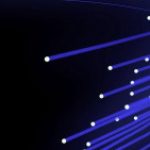- This topic has 20 replies, 4 voices, and was last updated 7 years, 7 months ago by
MD TAUFEEQ AHMED.
-
AuthorPosts
-
-
December 8, 2015 at 2:06 pm #28550
 Mohamed Ben zegalamParticipant
Mohamed Ben zegalamParticipantwhat the relation between the BER and Q factor in the BER analyser. I know that BER=0.5*erfc(Q/sqrt(2)), in my project I got Q=5.34 and logBER=-2, which logBER should be -8 by using the formula. also can BER test set calculate Q factor.
-
December 8, 2015 at 11:41 pm #28555
 alistuParticipant
alistuParticipantHi Mohamed,
Unfortunately, it is not possible to see the Q-factor using BER test set. In order to see what parameters you can see as results, you can right-click on BER test set and choose “component results”.
I haven’t come across the problem you have stated. So can you please upload an osd file in which the problem exists?
Regards
-
December 9, 2015 at 3:42 am #28568
Alessandro Festa
ParticipantHi Mohamed, using the formula I think that you need Q=7.5dB to have logBER=-8
Regards,
Alessandro
-
December 9, 2015 at 4:07 am #28570
 alistuParticipant
alistuParticipantHi Alessandro,
I believe Mohamed is not considering Q-factor in dB (when Q-factor = 9 corresponds to BER of 1e-9 and Q-factor = 9 corresponds to BER of 1e-12), otherwise you are absolutely right. This may be due to the fact that in BER analyzer, the Q-factor is not by default measured in dB.
Regards
-
December 9, 2015 at 4:48 am #28572
Alessandro Festa
ParticipantHi Alitsu,
ok, I have always considered Q-factor in dB because that is the unit I use the most
I do not understand when you say that Q=9 corresponds to BER=1E-9…my calculations say that Q=9 (linear) is a BER=3.8E-20…am I calculating it wrong?Thanks,
Alessandro
-
December 9, 2015 at 5:15 am #28573
 alistuParticipant
alistuParticipantI am sorry for the mistake I have made in the above statement by typing 9 instead of 6 in the case of BER=1e-9 and again 9 instead of 7 in case of BER=1e-12. So what Mohamed has mentioned about his expectation of BER is correct and so is your calculation of the BER. In fact, Q-factor is usually not expressed in dB and these values (6 and 7) are common values for practical systems as far as I am concerned. Thanks for correcting me.
Regards
-
December 9, 2015 at 5:19 am #28575
Alessandro Festa
ParticipantYou are welcome Alitsu!
I have been using dB all the time in my work so I am starting to consider the log units as the standard even when they are not
-
-
-
December 9, 2015 at 10:55 am #28600
 Mohamed Ben zegalamParticipant
Mohamed Ben zegalamParticipantDear all,
thanks for your reply ans useful information, please find my project that has isuue with Q factor vs BER
-
December 9, 2015 at 12:17 pm #28611
 alistuParticipant
alistuParticipantWhile I checked the file, I realized BER of about 1e-5 is obtained for Q-factor of more than 50! So there is definitely something wrong with it. I remember Damian suggesting on several occasions that BER test set better be used for OFDM systems instead of BER analyzer. Maybe it miscalculated the result for such systems.
-
-
December 9, 2015 at 1:38 pm #28629
 Mohamed Ben zegalamParticipant
Mohamed Ben zegalamParticipantHi Alistu’
thanks for your reply, as you can see I use also BER test set, the BRE is almost the same in BER analyser and BER test set. so the problem is in how BER analyser is calculating the Q factor.
I notice that in the result of BER test set has the ability to add something, is that mean we can add a function that use the result of the BER test set to produce another thing such as Q factor, or what is that mean?
-
December 9, 2015 at 2:11 pm #28632
 alistuParticipant
alistuParticipantBER test set can take into account factors such as cyclic prefix, pilot symbols and so on in case of OFDM modulation being used. BTW, I changed samples per bit parameter in your simulation to 1 (as I usually do in CO-OFDM in OptiSystem) and the results had a significant change for the better.
-
-
December 9, 2015 at 2:56 pm #28634
 Mohamed Ben zegalamParticipant
Mohamed Ben zegalamParticipantis there any reason why you usually set samples per bit parameter to 1 in CO OFDM, or it is just from your experience. also in the CO OFDM sample file, why the gain of OFDM OS12 demodulation set to 17000, I think it is too much gain. and if I tried to reduced then the result will be not good unless I adjust my power and the electrical/optical amplifiers.
-
December 10, 2015 at 2:02 am #28641
 alistuParticipant
alistuParticipantIt is merely my experience, otherwise it is not expected to get worse results when the samples per bit parameter is increased, as is the case with many other scheme whose implementation in OptiSystem would give better results when the number of samples per bit exceeds 1 (including DDO-OFDM).
-
-
December 11, 2015 at 10:47 am #28693
 Mohamed Ben zegalamParticipant
Mohamed Ben zegalamParticipantHi All,
I am still facing problem with matching Q factor value with BER value in all my design. either having BER=0 and Q factor =-1000 (which perfect result) or having high Q factor and low BER (BER= 0.5erfc(Q/sqrt(2)) is not work with these values).
Is there any one face this problem before?, is there any parameters in BER analyser I have to pay with them?
-
December 14, 2015 at 7:56 am #28740
Alessandro Festa
ParticipantHi Mohamed, can you attach the .osd file where you are having the issues you describe?
Thanks,
Alessandro
-
-
December 15, 2015 at 11:09 am #28762
 Mohamed Ben zegalamParticipant
Mohamed Ben zegalamParticipantHi all,
I manage to make the BER value match the formula [BER= 0.5*erfc(Q/sqrt(2))] by changing algorithm parameter in the BER analyser from Measured to Gaussian, but when I change algorithm to Gaussian I noticed that the BER from BER analyser is much smaller than the BER test set and the Q factor is match the value with the BER in the BER analyser as it is in the attached file.
and if the algorithm is set as Measured, then both BERs are the same but the Q factor is too high and does not match the formula.do you know what is the algorithm that BER test set use?, because it is looks like the BER test set is following Measured algorithm.
-
December 15, 2015 at 11:39 am #28768
 alistuParticipant
alistuParticipantHi Mohamed,
BER test set calculates the bit error rate on an empirical basis, meaning if 4096 bits are transmitted and two of them are detected incorrectly, it shows BER=4.88e-4. In your design, the constellation diagram is very clear, so it should show zero BER. Therefore I wouldn’t trust the result. (Otherwise, we were recommended on several occasions to use BER test set instead)
Regards
-
-
December 15, 2015 at 1:13 pm #28777
 Mohamed Ben zegalamParticipant
Mohamed Ben zegalamParticipantThanks alistu for your reply.
please may you be more clear which results that you would not trust (BER analyser, BER test set, or both).
I tried different design by using both (BER test and BER analyser), and I come with the conclusion that I explained before. In addition, I never got BER lower than 10^-3 by using BER test set. In other side, I can reach BER=0 and log(BER)=-1000 by using BER analyser (when the algorithm is set to Gaussion), and I Binary Sequence visualizer in both input and output and compared them, they are the same.
-
December 15, 2015 at 1:59 pm #28778
 alistuParticipant
alistuParticipantEven though I was not certain about my opinion, I think I was clear that I wouldn’t trust BER test set shown result, as it shows error while constellation diagram is rather clear. The reason for obtaining results in the interval you mentioned by BER test set is the act that the BER test set error accuracy is related to the sequence length. For example, when you choose a sequence of length 4096, the least value you can get for error (aside from zero) is when one bit is detected incorrectly. And since the component calculates the error empirically, the least error value possible would be 1/4096=2.44e-4 . So by increasing sequence length, you can get more accurate BER this way.
-
-
November 17, 2017 at 1:25 am #45415
MD TAUFEEQ AHMED
ParticipantHi all,
can anyone please tell me what is the exact relation between Q factor and BER?
I am working on UDWDM PON systems where in I tried to design a basic WDM PON design in which I got a few results as shown in attached file below.
please have a look at it once and help me in this regard.Thank you
-
-
AuthorPosts
- You must be logged in to reply to this topic.


